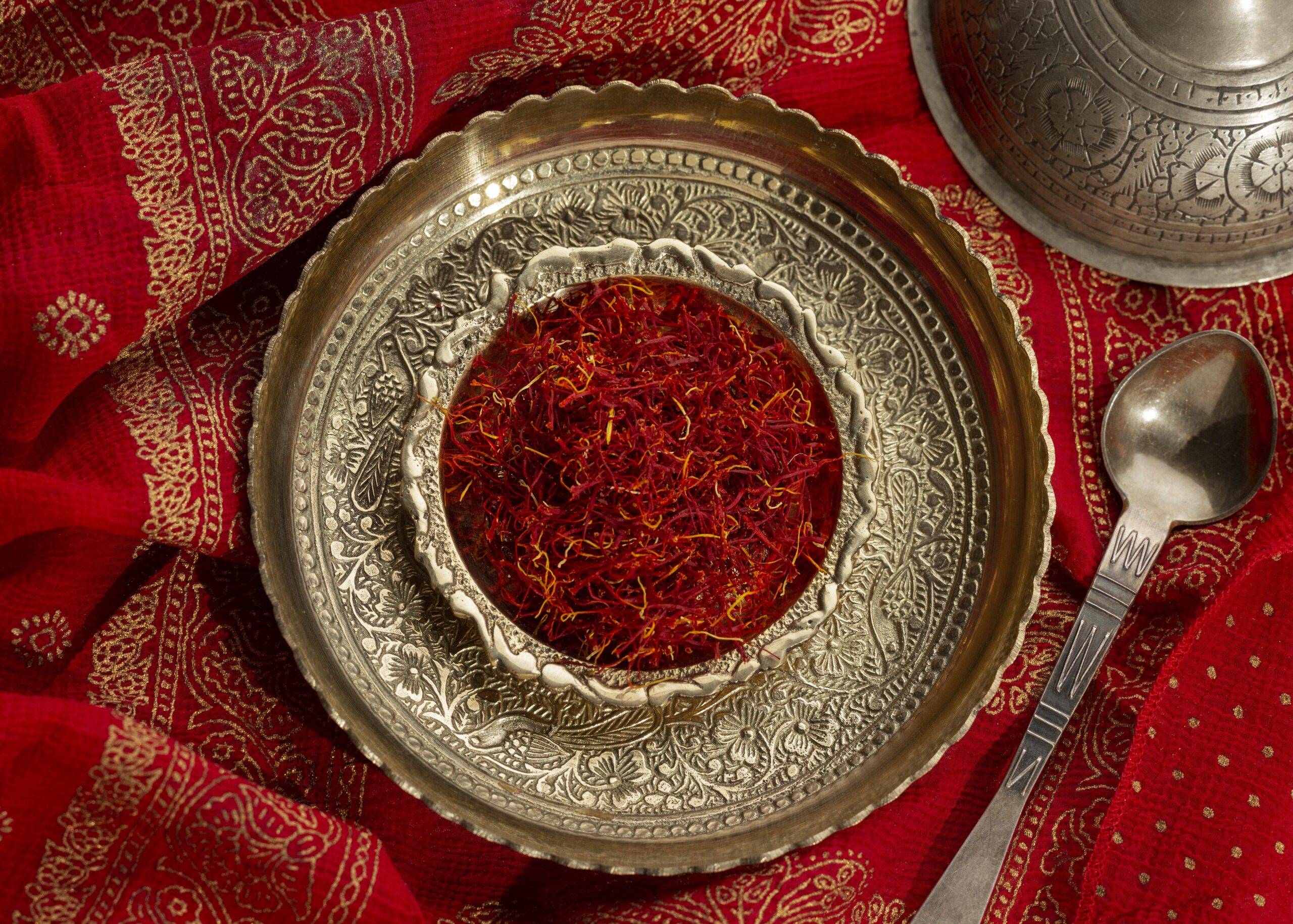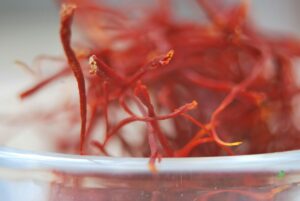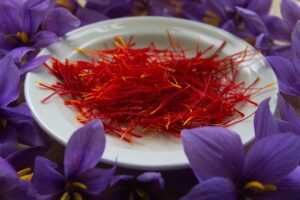For centuries, saffron has been much more than a culinary delight. Indeed, revered as “red gold,” this precious spice has woven itself into the fabric of ancient healing systems—from Persian apothecaries to Ayurvedic and Greco-Arabic medicine. Today, however, as the world shifts toward evidence-based wellness, a key question emerges: how does saffron’s storied past hold up under the lens of modern science? In other words, can tradition and research align—and, if so, what does the data actually show?
The Roots: Saffron’s Traditional Healing Legacy
Saffron (Crocus sativus L.) has held a special place in traditional medicine for millennia. Healers across Persia, India, and the Mediterranean prescribed saffron for everything from digestive issues and mood elevation to wound healing and heart health. Its vibrant color, unique aroma, and rarity made it a symbol of vitality and luxury.
In Persian tradition, saffron is believed to “warm the heart and uplift the spirit.” Ancient texts reference its use as a tonic for melancholy, a remedy for menstrual discomfort, and even an aphrodisiac. These age-old applications laid the groundwork for saffron’s reputation as a holistic healer.
The Shift: From Anecdote to Evidence
Modern medicine demands more than tradition—it seeks proof. Over the past two decades, researchers have begun to validate what ancient cultures intuited about saffron. Through rigorous studies, saffron’s bioactive compounds—crocin, safranal, and picrocrocin—are being linked to tangible health benefits.
Key Areas of Modern Research
- Mood & Emotional Well-being:
Clinical trials suggest saffron may help alleviate symptoms of mild-to-moderate depression and anxiety, rivaling some pharmaceutical interventions with fewer side effects. - Cognitive Health:
Early evidence points to saffron’s potential in supporting memory and cognitive function, even showing promise in mild Alzheimer’s disease. - Women’s Health:
Saffron is being studied for its role in easing PMS and menopausal symptoms, echoing its traditional use for hormonal balance. - Antioxidant & Anti-inflammatory Effects:
The spice’s potent antioxidants help combat oxidative stress, supporting overall cellular health and reducing inflammation. - Vision & Eye Health:
Emerging research connects saffron supplementation with improved retinal health and protection against age-related macular degeneration.
The Bridge: Tradition Meets Science
What’s remarkable is how many of saffron’s traditional uses are now being substantiated by clinical evidence. While not a cure-all, saffron’s unique blend of bioactive compounds is earning it a place in integrative wellness routines. As with all botanicals, quality and sourcing are paramount—look for saffron that’s lab-tested for purity and potency.
The Future: Saffron in Everyday Wellness
As research evolves, saffron is moving from the pages of ancient manuscripts to modern medicine cabinets and wellness rituals. Whether steeped in tea, infused in elixirs, or formulated in supplements, saffron offers a bridge between heritage and evidence-based health.
At Zarafron, we honor this legacy by crafting products rooted in Persian tradition and guided by the latest science. Our mission is to help you glow from within—naturally and authentically.
References:
Adapted from News Medical: Saffron’s Evolving Place in Modern Medicine—From Tradition to Evidence




